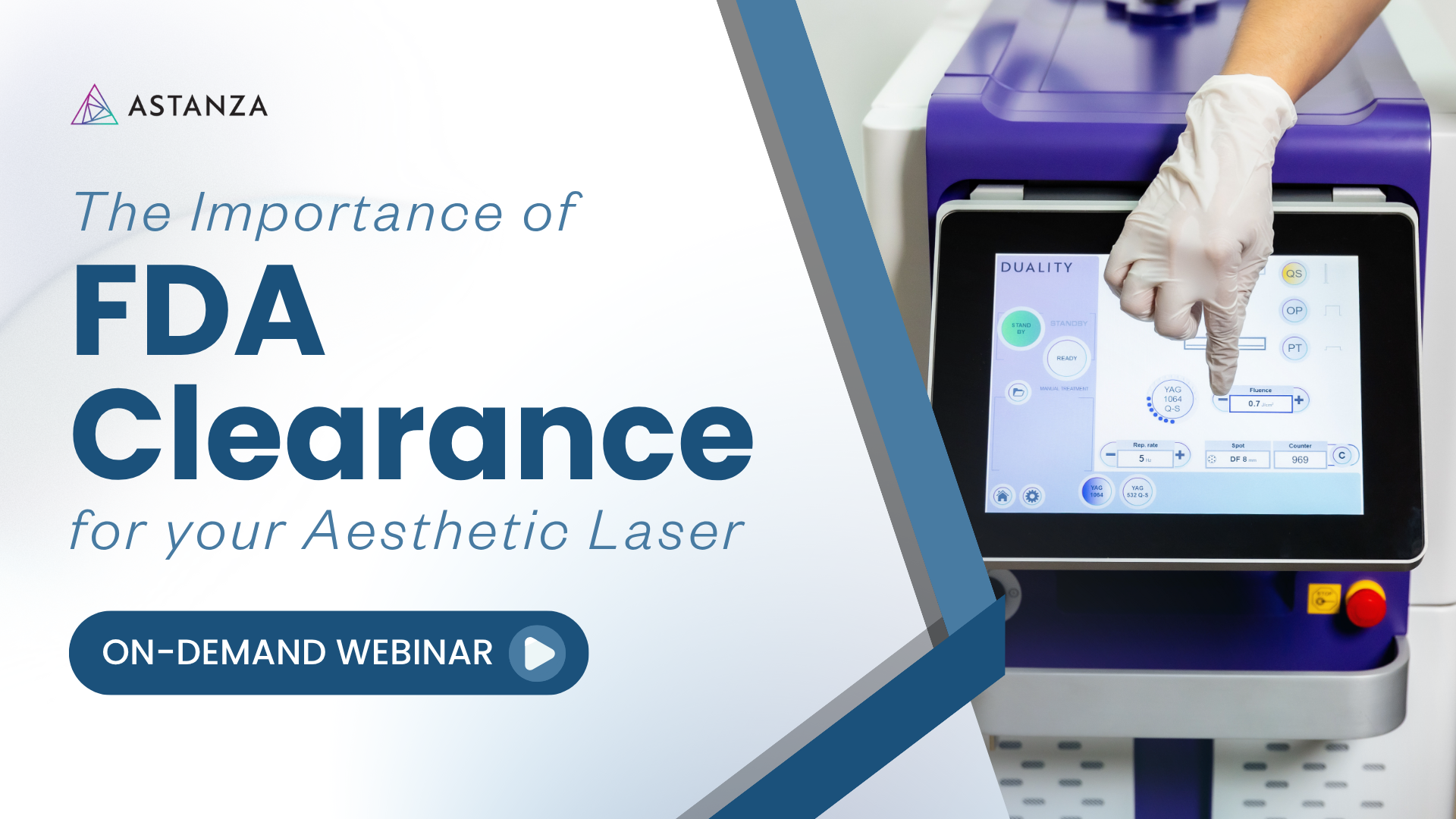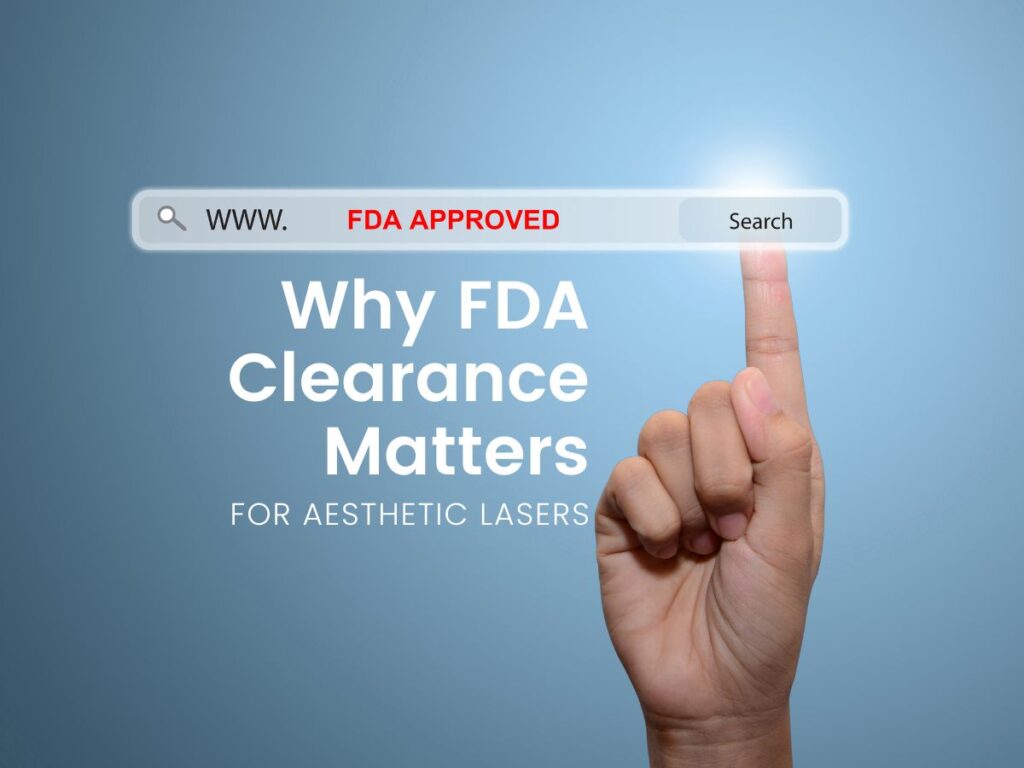The Food and Drug Administration, or FDA, is the governing body in the United States which sets guidelines for what makes a product safe for use or consumption. As the name would indicate, the FDA has an extremely wide umbrella. They have the power to audit, assess, and ensure manufacturers and distributors all have processes in place that ensure the end consumer of any product will be safe with proper use. While the FDA looks at several industries, we’re going to focus on medical devices. If you are planning on opening or starting a laser tattoo removal business or medical spa, these are things that you must be aware of.
Understanding the FDA Classification Tiers
There are three tiers of FDA product classification- Class I, II, and III. These classes are distinguished by their level of risk associated with the proper use of the device. Classes I and II go through an FDA “clearance” process, which happens much faster than the “approval” required in Class III devices. Class I devices might be used in a medical setting but have minimal or no risk. Tongue depressors or heat pads, for instance, could be considered Class I devices. A Class II device has moderate risk and goes through something called the 510(k) approval process. Lasers in tattoo removal, hair removal, photo facials, resurfacing, etc., are all in this category. The key term we’ll discuss here is “substantially equivalent.”
This substantial equivalence is phrased in a way that when a manufacturer seeks to put a new laser or device on the market, taking advantage of the 510(k) process will allow the manufacturer to show that although this device is different, it’s close enough to other existing technology. Therefore, additional testing isn’t required to demonstrate that a particular device is safe for users and patients.
If a device doesn’t fall into the Class I or II categories, it becomes a Class III device. Class III devices are those with high patient risk and may include heart valve replacements and pacemakers. These go through significantly more testing in vivo. In vitro, we can ensure that biocompatibility is strong and the risk to patients can be kept at an absolute minimum. If it’s not clear from reading this, Class III devices take much longer to reach the market and are often accompanied by a much higher price tag.

All lasers in the tattoo removal industry have utilized the 510(k) approval process. Even as the pulse duration has reduced to the picosecond domain (Picosure, 2012), all tattoo removal lasers have utilized the pathway demonstrating substantial equivalence to predecessors on the market. The differences come in everything around it–pulse duration, fluence and spot sizes, and the marketing, clinical, and technical support behind it.
So why does this all matter?
The FDA is the governing body; they make the rules. And these rules have to be followed by everyone, not just the manufacturer. For example, most state boards of medicine classify the firing of a laser on the skin for any purpose as the practice of medicine. So without proper delegation, a practitioner may be practicing medicine without a license. Similarly, using a laser that is not cleared by the governing body indicating that a device is safe (even if you are practicing medicine legally) can create a situation where lawsuits are exceptionally easy to win and can stack up quickly.
How do I know if my laser is cleared by the FDA?
Easy! The FDA makes a database for this kind of thing. Even still, you have to be careful. Sometimes an overseas manufacturer will have *a* laser pass through the FDA clearance process, but it may not be the specific laser you purchased. Your red flags should be if the manufacturer or distributor doesn’t have an office or workforce in the United States or if the laser’s marketing materials are in broken English or lacks simple proofreading. You may be saving some money on the front end, but the risks are far, far greater than your fiscal savings.
The FDA website provides loads of information about consumer health and safety. We encourage all practitioners hoping to purchase a laser from any manufacturer to understand the ins and outs of FDA-cleared products. Here are a few good articles to get you started:
Astanza’s FDA-Cleared Products
The Astanza Duality is manufactured by the Italian company Quanta Systems, under the name Duolite. Astanza chose to call it the Duality since there were already a few “Lites” on the market at the time of release (2012). The Trinity is another manufactured Quanta Systems device and was originally cleared as the Q Plus T.
The original Eternity was initially manufactured by Wavelight, labeled as the Sinon, and sold by Quantel Derma and, ultimately, Alma Lasers.
The Eternity TSR, DermaBlate®, and MeDioStar® are all manufactured by the German company Asclepion and are originally labeled the Tattoo Star R, MCL31 Dermablate, Mediostar Next Pro, and MeDioStar, respectively.
If you have any questions about the clearance of the Astanza products or are unsure of whether or not a device of interest is cleared, we’re happy to help. It’s as easy as searching for the clearance in the FDA database or directing a simple question to your friendly Astanza sales rep.









